Caves provide a natural source of shelter. They appear in many myths and traditions worldwide. Even in Egypt, which has few natural caves, a myth developed in which the Nile god poured water from inside a cave. The Phoenicians also located the river god in a cave. In Assyro-Babylonian mythology, humans and animals survived a flood by hiding in a cave. Indians viewed caves as places for meditation and sacrifices. Both the Greeks and the Romans viewed caves as mystical places.
The following article is a summary of “The Significance of Caves in Post-Flood History of Mankind” by Emil Silvestru, and of the surrounding discussion and research pertaining to it. The views expressed do not necessarily reflect those of New Creation.
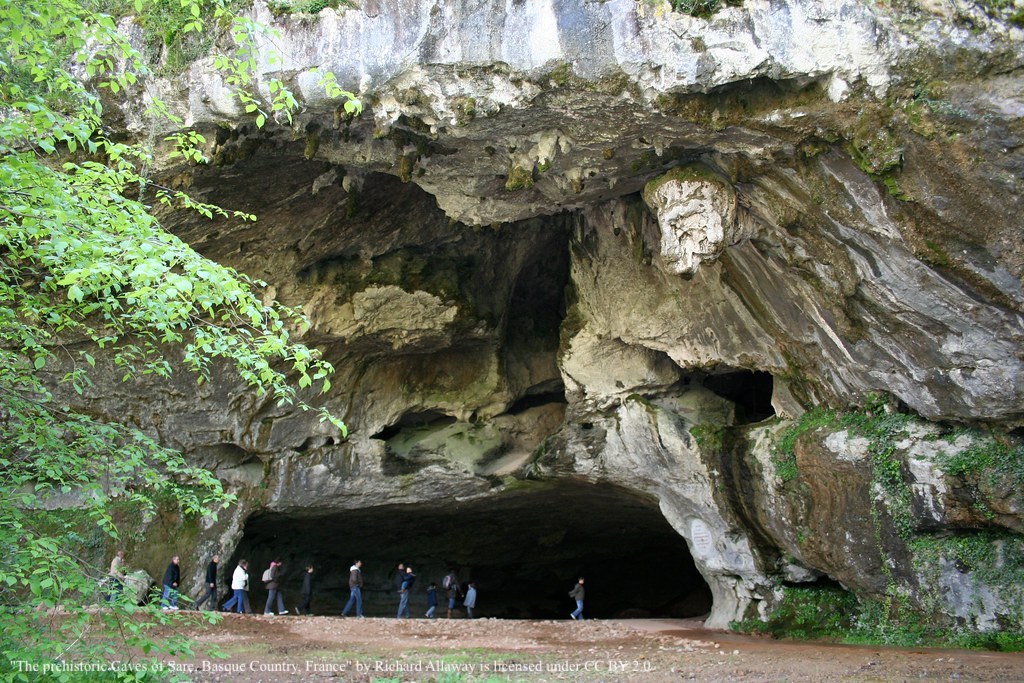
Even in modern times, caves continue to serve purposes as places of work, such as cheese factories in Europe. Terrorists in Afghanistan have used caves as hiding places in recent history. But how did early post-Flood humans use caves?
Early usage of caves as shelters and religious sanctuaries was dependent on the availability of caves and the motivation of the users. In a 2003 scholarly article, Emil Silvestru offers an overview of the ancient use of caves by humans. Although the author does not agree with the conventional dates assigned to most of the caves he discusses, he chose to use them to avoid confusion.
When did Humans begin to use caves as shelters?
In previous publications, Silvestru1,2 demonstrated that proper karst, the type of landscape that typically includes caves, did not exist before the Flood. The Bible does not mention caves before the Flood. In fact, the first mention of caves in the Bible is in Genesis 19:30, which refers to the place where Lot and his daughters lived after the destruction of Sodom.
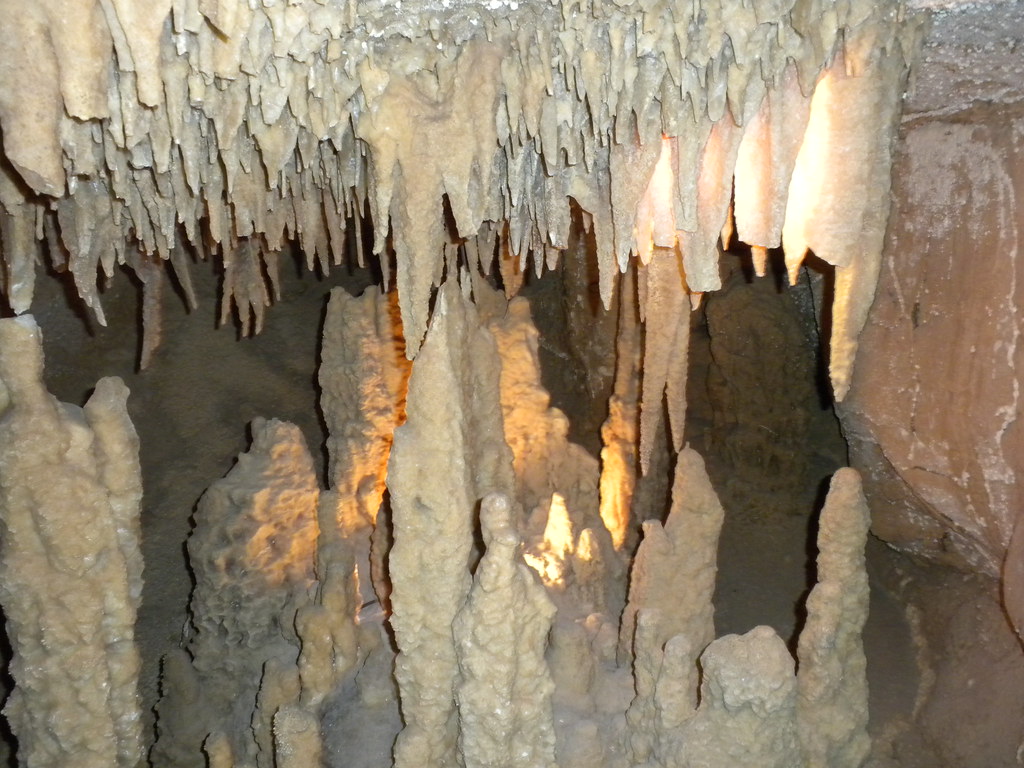
We would find clear evidence if caves existed before the Flood; the flooding would have left damage to the speleothems and marine sediment deposits. Such evidence is not present in most caves. This indicates these caves could not have existed before the Flood. The only known caves exhibiting this type of evidence are those which have been affected by changes in the ocean level.
Since there is no known evidence that caves existed before the Flood, Silvestru3 concludes that “humans only started using caves as shelters after the Flood.”
Throughout the article, Silvestru references the conventional dating of caves and cave paintings. These dates are much older than those in a Young Earth Creationism timeline, but Silvestru does not address these challenges in this particular article.
What Types of Evidence Exist of Human Use of Caves?
Humans have used caves for shelters and for religious sanctuaries. They seldom used any given cave for both purposes. It is possible that their religious beliefs required that sanctuaries be set apart for religious ceremonies. The activities of daily life may have profaned the sacred spaces.
Habitation Evidence
Evidence for human habitation of caves includes stone and bone tools, hearths, and human remains. In some instances, human footprints still remain preserved in soft clay. Sometimes, human footprints appear together with those of cave bears. Perhaps the humans hunted cave bears. In one cave in Romania, human footprints appear superimposed on cave bear footprints. Cave bear bones in the recesses of the cave suggest that the humans were successful in their hunt.
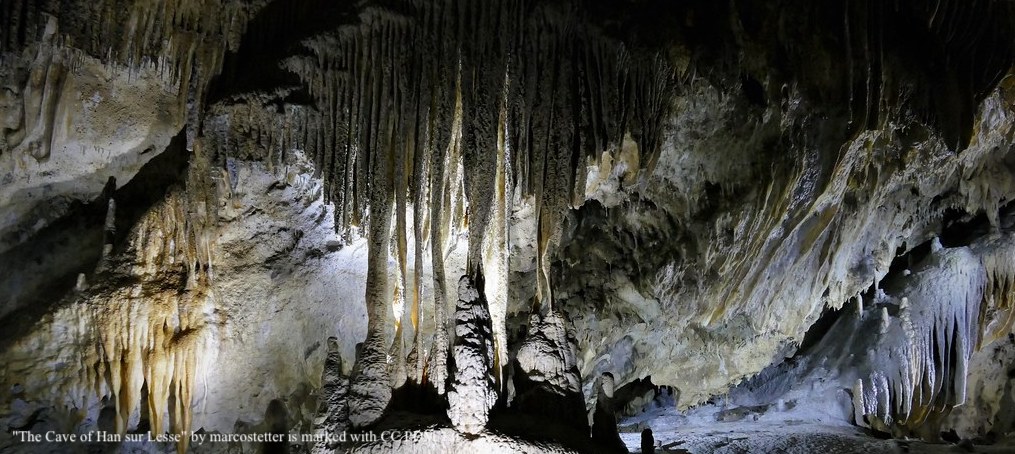
Longgupo Cave in China yielded the oldest known tools ever found in a cave. Conventional dating places the tools at 1.78–1.96 million years old. Twin Rivers Cave in Zambia yielded pigments and paint grinding tools conventionally dated to 200–350 thousand years old. The paints functioned in body painting and rituals. This suggests the use of symbols, which may imply the existence of language.
Several caves feature paintings that are likely non-religious. The painted slabs in Fumane Cave in Italy feature animal and human figures conventionally dated at 32–36.5 thousand years old.
Artwork in Caves
Most paleoart falls into the category of religious artifacts. These pieces of art may have functioned in religious rituals honoring Mother Goddess Earth as the source of life. Three types of paleoart exist. These are paintings, engravings, and bas-reliefs.
Paintings usually feature simple outlines or true paintings with outlines, shading, and fills. Some of the earliest cave paintings adorn the Chauvet Cave in France. These paintings have conventional dates of 32–35 thousand years old. The artistry is striking, taking advantage of perspective and lighting.
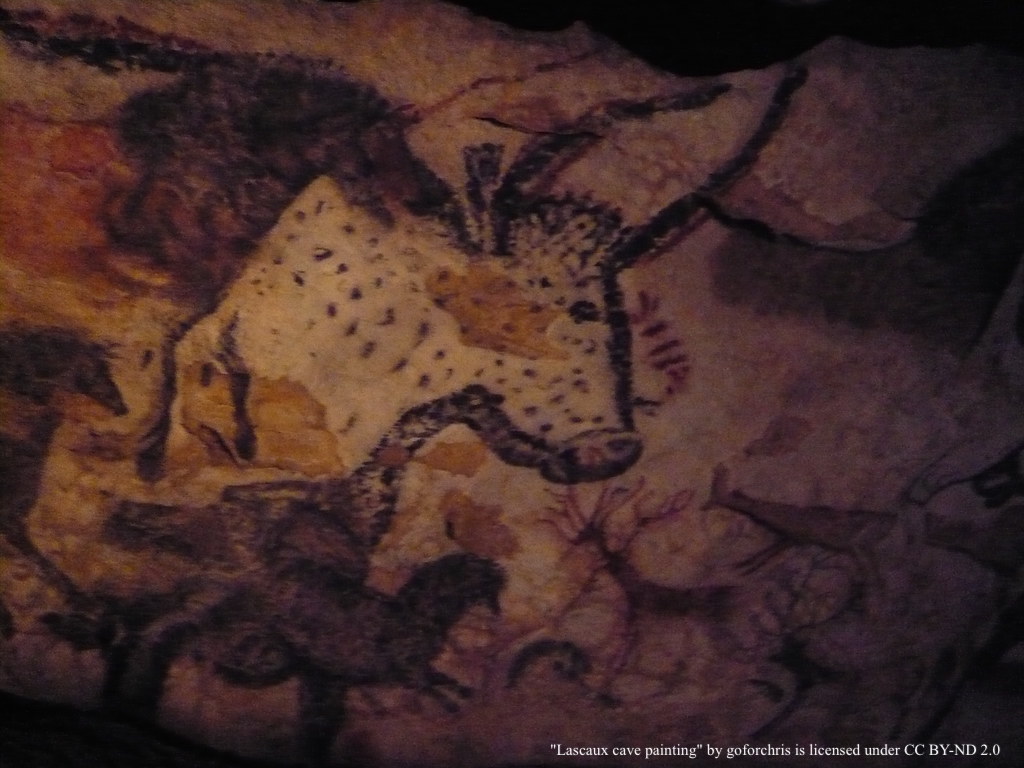
Engravings usually appear on soft limestone surfaces. Early humans often created engravings alongside or superimposed upon paintings.
Bas-reliefs consist of soft clay attached to cave walls. The Montespan Cave and the Tuc s’Audoubert Cave, both in the French Pyrenees, feature bears, felines, and bison in bas-relief.
Some Problems with the Dating of Cave Art
No evidence exists that stalagmites or stalactites functioned as part of cave art. This suggests that these speleothems formed after the art was already in existence. In fact, in some instances, speleothems partially or completely cover cave art. This creates a problem with the dating of cave art, since most of the speleothems have been assigned much earlier dates than those assigned to the art. Perhaps the artwork is younger than typically thought.
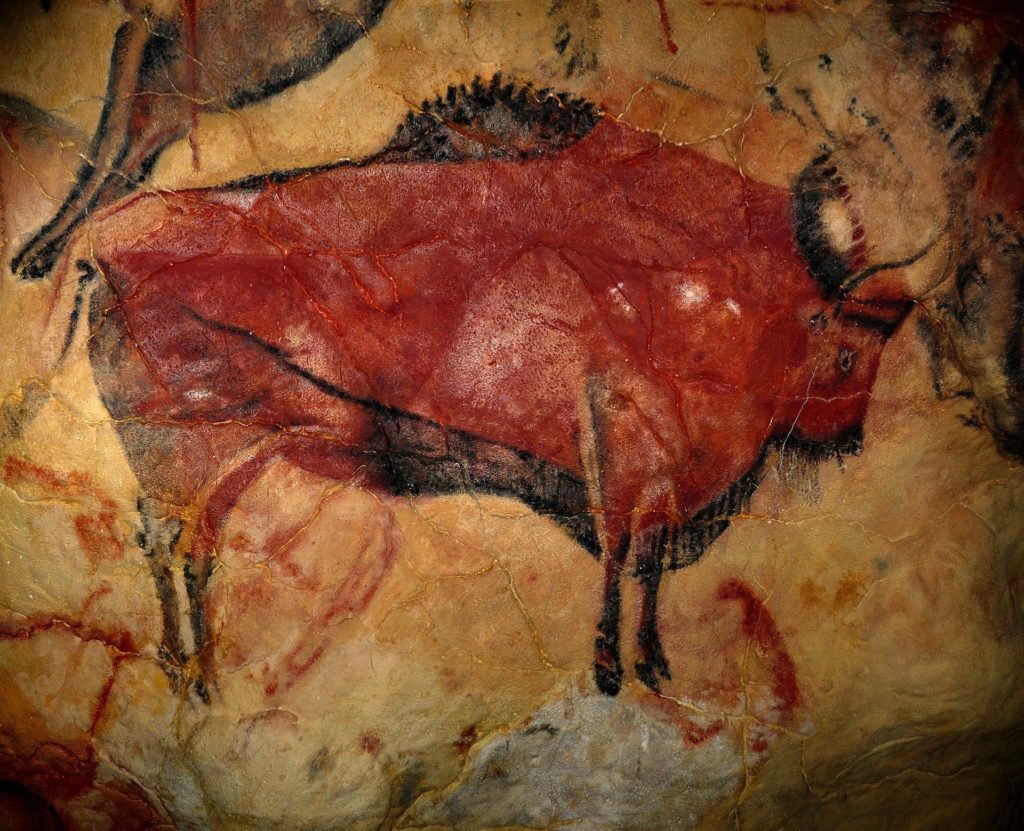
Another problem with the dating of the cave art is that the style of the art remained the same for a presumed long period. At the time that Silvestru wrote the article, conventional dating suggested that the creation of the art spans 30,000 years. Newer research has more than doubled that number, placing it around 64,000 years.4 Yet the similarity in art style is irrefutable, and no other art style has been known to survive that long. This strengthens Silvestru’s argument that the cave art is not as old as most researchers believe it to be.
Religious Sanctuaries or Art Galleries?
Specialists disagree regarding the nature of cave art. Some researchers believe that the artwork functioned in religious ceremonies. Others suggest that it represents artistic expressions of early humans. Some cave art has been found alongside artifacts that are clearly religious in nature, but this is not true of all cave art.
Silvestru and others believe that cave art is deeply rooted in religious beliefs. Noah walked with God (Genesis 6:9), but after his descendants spread out over the earth, their connection with God may have weakened, allowing other religious beliefs to form. Early goddesses emphasized the reproductive nature of women. Because of this emphasis on fertility, early humans may have viewed caves as the womb of Mother Earth.
Footprints in the areas of the paintings suggest that ritual dancing occurred around the artwork. Additionally, the art is typically located in areas with good acoustics, suggesting that religious ceremonies may have included chanting or singing. Some of the artwork depicts what appears to be masked humans, perhaps sorcerers or shamans.
Why is Almost all Cave Art Found in Europe?

Over 300 caves featuring cave art have been discovered in Europe, primarily in France, Spain, and Italy . A few decorated caves exist in Brazil, but they are not nearly as old as those in Europe. The painting style in the Brazil caves is markedly different from those in Europe, as well.
Silvestru suggests that the reasons that so many decorated caves exist in Europe is that they are all part of one early European civilization. This is contrary to the mainstream view regarding early cave dwellers. Evolution theory suggests that mankind has evolved from primitive to complex. A complex civilization as early as the Palaeolithic period does not fit this scheme. When the Chauvet Cave paintings first came to light, scholars assumed that they must be younger than certain other known cave paintings because they were more evolved. Yet carbon dating suggests that they are twice as old as those other pieces of art.
Based on this evidence and other similar examples, some scholars have begun to move away from the standard evolutionary model for the development of human civilization. Some have embraced a modified evolutionary model which suggests that humans became capable of complexity earlier than previously thought. They suggest that the reason that cave art seems to be limited to a relatively small area in Europe is that the European caves were better preserved. This view is problematic, since many caves have survived in other regions, yet do not feature cave art.
The Post-Flood Development of Karst Lands
Following the Flood, hot chemical solutions dissolved large masses of rock (typically limestone, dolomite, rock gypsum, etc.). This created large cave systems in a short amount of time. Upheaval in land formations following the Flood brought these cave systems to the surface of the earth, which is known as karst terrain. Some swallowed rivers and streams, becoming subterranean water features.
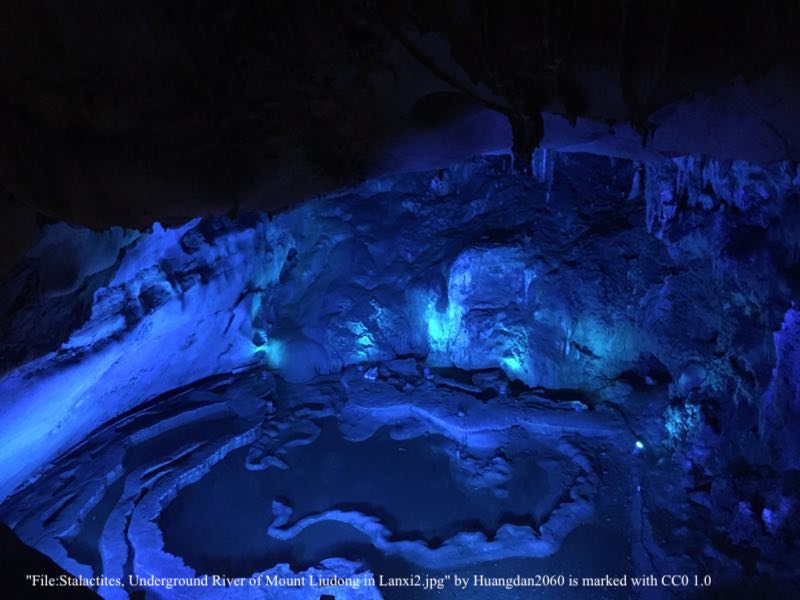
Within 500 years of the Flood, caves would have been fully formed and accessible to humans on every continent. They are, however, more prevalent in the Northern Hemisphere. As the Ice Age reached its maximum extent, the need for shelter became more pronounced. Humans utilized caves for shelter in all inhabited areas. However, only the civilization based in Europe used caves for artwork.
The Ice Age sealed travel routes that had previously been transversable, isolating the humans who had traveled to Europe. These isolated people developed their own distinct cultural group. One facet of their culture was cave art, which was likely tied to their religious beliefs.
Conclusions
Caves, formed shortly after the Flood, became accessible to people to use as shelters. After the Tower of Babel event, humans dispersed throughout the earth. They lost touch with the faith of their forefather Noah. New religious beliefs emerged. In Europe, it appears that a belief developed that caves represented the womb of Mother Earth. Thus, caves began to serve as religious sanctuaries. Cave art in Europe likely functioned as a part of religious ceremonies that likely also included dancing and singing or chanting.
Footnotes
- Silvestru, Emil (2000). “Paleokarst – A Riddle Inside Confusion,” Creation Ex Nihilo Technical Journal 14, no. 3: 100–108. ↩︎
- Silvestru, Emil (2001). “The Riddle of Paleokarst Solved,” Journal of Creation 15, no. 3: 105–114. ↩︎
- Silvestru Emil (2003). “The Significance of Caves in Post-Flood History of Mankind,” The Proceedings of the International Conference on Creationism 5. ↩︎
- D. L. Hoffmann et al (2018). “U-Th dating of carbonate crusts reveals Neanderthal origin of Iberian cave art.” Science 359: 912–915. ↩︎

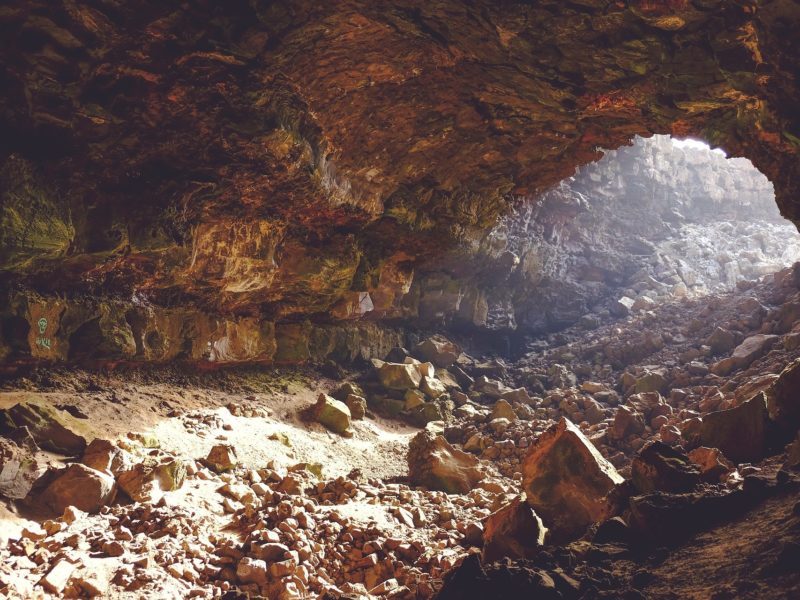
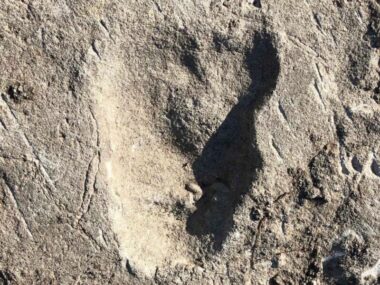

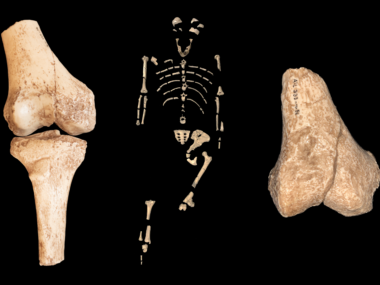

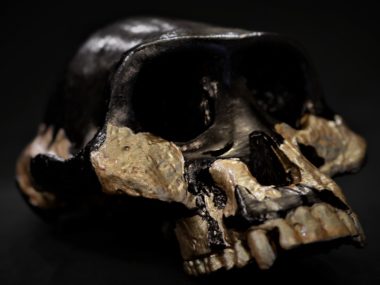





Genesis 10:26-30, written with Joktan and his sons.
V30 written with their dwelling, (A MOUNTAIN OF THE EAST).
After the flood